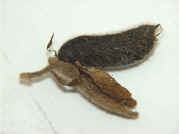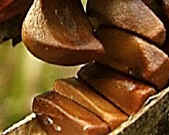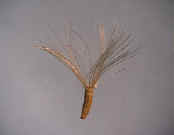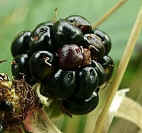Please help us raise £6000 for amphibian conservation by voting
for us
- it costs you nothing &
takes just a few minutes!
Click here
to find out more
Seed Dispersal
 |
 |
 |
 |
Flowering plants reproduce themselves by producing seeds. The seeds also provide the plants with a way to spread out and grow in new places, sometimes a long way from the parent. This is important because if the seeds are not dispersed, many germinating seedlings will grow very close to the parent plant. This results in competition between every one of the seedlings as well as with the parent plant. The competition is for light, space, water and nutrients. All of these are important for plants to be able to grow. Seeds can be dispersed in a number of different ways. They may be carried by wind, water or animals. Some plants even shoot the seeds out explosively. Seed size is an important factor. Click on the links below to find out more. You can also
access an activity sheet related to seed dispersal, or try out
the Ranger's Puzzle Page, with Wordsearch, Crossword and
Ranger's bad joke!. Notes for Teachers can be found here. If you are unsure of the meaning of any
words, visit the Glossary. |
However, there is a down-side to having large seeds. The larger and heavier the seed, the more difficult it becomes to disperse it effectively by wind, or explosive techniques. All of these require light seeds. Seeds such as Foxglove are minute and are easily blown about by the wind. Larger wind-dispersed seeds are generally heavier and therefore require features such as parachutes or wings to help keep them aloft. For example, Dandelion seeds have developed very light and fluffy parachute-like structures. These help the seeds to float in the wind and delays their fall to the ground. This delay allows the seeds to be carried further. The largest and heaviest wind-dispersed seeds, such as Sycamore cannot rely on hair-like parachutes to keep them airborne. They would have to be enormous to be effective. Instead they have developed a wing which causes them to spin through the air like mini helicopters. This again delays their fall. The biggest seeds of all cannot possibly be dispersed by the wind. Large seeds such as nuts, are a valuable food for some animals. They are therefore often dispersed by animals which collect them to eat. Rarely are all such seeds eaten. Some will usually be overlooked, leaving them to germinate wherever they have been left when conditions are right. |
.
